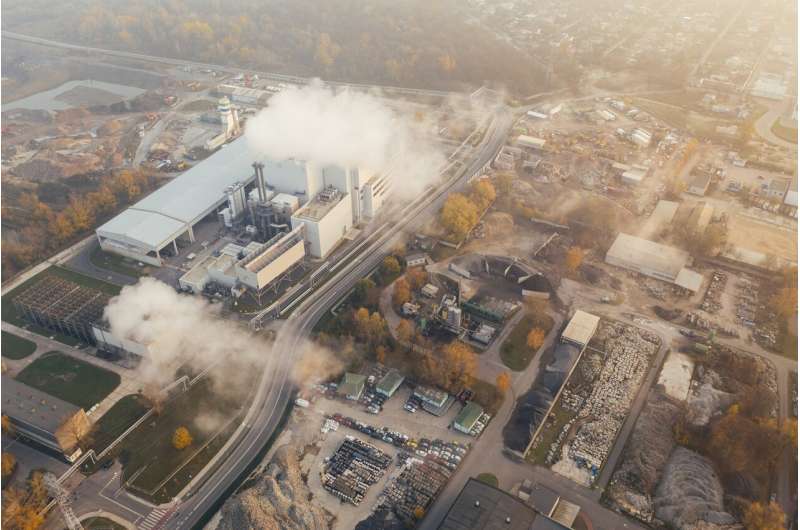
As the UK’s National Metrology Institute, NPL has a significant role to play in supporting climate change mitigation action and enabling the innovations which will help industry deliver on their goals of reducing greenhouse gas emissions. Geological storage of carbon has gained a lot of attention, but a more versatile carbon capture solution is required if it is to become a reliable mitigation to emissions.
Cambridge Carbon Capture has developed a technology which allows carbon dioxide to be sequestered through a two-stage mineralisation process. First, silicate minerals are digested at low energy using CCC’s Patented process, to produce a low-cost magnesium hydroxide, which is used for carbon capture. By-products of this process include silicon dioxide, which can be used in construction, or in high-value industries like glassmaking, and trace metals such as Nickel, Cobalt and Platinum needed to support role out of electric vehicles and storage of renewable energy.
The second stage involves carbon capture, where the magnesium hydroxide produced in the first stage of the process reacts with carbon dioxide from an exhaust to produce magnesium carbonate, permanently storing the carbon as a solid substance. The magnesium carbonate is then filtered out and used as a valuable, light weigh, thermally insulating, fire-retardant building material.
This technology can be used to enable zero-emission production of electricity or steel, as well as in partnership with gas suppliers to convert natural gas to zero-emissions hydrogen.
Cambridge Carbon Capture needed specialist equipment and expertise to measure the mineralisation of carbon dioxide and increase the efficiency of its carbon capture technology, reducing costs and increasing the adoption of a sustainable material by industry at large scale. They approached NPL as they wanted to gain a deeper understanding of their mineralisation process, and how it can be monitored using terahertz spectroscopy.
NPL used terahertz spectroscopy to monitor the Cambridge Carbon Capture process, especially with respect to reaction kinetics. Terahertz spectra of mineral samples at different stages of the carbon capture process revealed the degree of chemical conversion of the original material into its carbonized form, providing tools to optimize the reaction conditions. This increased the efficiency of the process of locking carbon dioxide in solid form.
The results helped Cambridge Carbon Capture gain a better understanding of the mineralisation process under a variety of conditions. They were also able to make the process more efficient and therefore reduce costs and increase the likelihood of widespread uptake by industry.
The detailed insights NPL provided unearthed previously unknown efficiency gains in the mineralisation process. Terahertz measurement is a new technique, and NPL showed that it was effective in monitoring the Cambridge Carbon Capture process, enabling an increase in both energy efficiency and in the efficiency of raw materials used.
The technology can now be used to create a product of higher purity, which is considerably more valuable.
Cambridge Carbon Capture is now in pre-commercial discussions with potential customers and hopes to pilot the technology at a commercial scale. This will lead to development of plant capable of capturing one megaton of carbon per year with revenues from sale of by-products more than covering the cost of CO2 capture. Once profitable routes to permanent carbon capture and sequestration are demonstrated at scale, CCC predicts rapid take up of their technology resulting in meaningful reductions in industrial emissions helping the UK reach our target of Net Zero emissions by 2050.
Furthermore, the company hopes that its sustainable building materials will be particularly useful in countries like Bangladesh, which also may not have established carbon capture processes in place due to economic constraints.
Mira Naftaly, Senior Research Scientist, NPL states: This was an interesting and challenging project, and a novel application of Terahertz spectroscopy. The success of this project will provide a basis for future work in this area. We are currently preparing a joint scientific paper with Cambridge Carbon Capture.
Michael Evans, CEO at Cambridge Carbon Capture, said: “Without this support, the project would have been subjected to significant delays, and most likely continued at a smaller scale during COVID-19. Instead, the work eventually led to new techniques and efficiency gains and we were able to set our business up for future success amidst the pandemic. We are also excited to be involved in the development of a very powerful new analysis tool which we hope to continue using for further optimisation of our process.”
Citation:
Improving carbon capture efficiency to help net zero emissions (2021, September 14)
retrieved 14 September 2021
from https://techxplore.com/news/2021-09-carbon-capture-efficiency-net-emissions.html
This document is subject to copyright. Apart from any fair dealing for the purpose of private study or research, no
part may be reproduced without the written permission. The content is provided for information purposes only.
Stay connected with us on social media platform for instant update click here to join our Twitter, & Facebook
We are now on Telegram. Click here to join our channel (@TechiUpdate) and stay updated with the latest Technology headlines.
For all the latest Technology News Click Here
For the latest news and updates, follow us on Google News.
